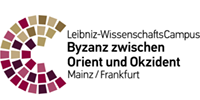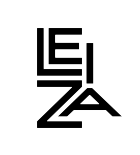Liturgical implements in East and West. Distribution, Reception and Functionality (5th-9th centuries)
Late antique and early medieval liturgical sets in Western Europe between the 5th and the 9th centuries show a great variety of forms, chronologies and production centres. Liturgical implements – chalices and patens, thuribles, jugs and paterae, lamps, candelabra, processional crosses – bear witness of local manufacturing and imports. The imported items often come from the Byzantine Empire. Evidences of this phenomenon can be found in archaeological, epigraphic, iconographic and written sources. When, between the 5th and the 6th centuries, a considerable activity of church-building spread in Western Europe, liturgical sets (or church treasures) start to be accumulated in many locations. Those which survived up to these days, together with the information provided by iconographic and written sources, make possible to study them on a large scale. Objects coming from the Byzantine Empire were used together with other ones produced locally or imported from further areas (e.g. some types of jugs manufactured in the Iberian Peninsula). Furthermore, the same liturgical set could include items relatively “freshly-made” together with actual antiques-pieces, 300 or 400 hundred years old, especially bronze lamps such as the griffin ones. A wide-range research focused on whole liturgical sets / church treasures (instead of specific typologies of objects), on a large geographical and chronological scale, has never been done. The study, which will be developed starting from "closed sets" coming from archaeological context, will provide results:
- on the typologies, chronology and distribution of objects: many classes of materials, indeed, have never been systematically collected and ordered;
- on the processes of accumulation of liturgical sets / church treasures, which remarkably expand in space and in time comprising different objects in several different forms; this theme can only be approached considering a large time span, from the beginning in the 5th-6th centuries to (roughly) the end of the Carolingian Age;
- on the production centres and on the dimensions of the trade / import in terms of quantity and quality of goods (both from Byzantium to the West and, maybe, vice versa);
- on the function and use of artefacts: depending by their distribution, they may show similarities and differences in the liturgical practices; the reception of byzantine imported items in the West, moreover, involves not only the “sacred” sphere, but also the “profane” one, as the same types of objects have been found both in liturgical contexts (church treasures) and in graves or settlements.
This project is affiliated to Römisch-Germanisches Zentralmuseum Mainz.
Sponsorship
Leibniz-WissenschaftsCampus Mainz
Support
Leibniz-WissenschaftsCampus MainzPublications
- M. Beghelli / J. Pinar, Cast bronze vessels in the 6th-9th centuries, Part 1. Remarks on an assemblage of liturgical implements found at Morbello (prov. Alessandria, Piedmont / I), in: Archäologisches Korrespondenzblatt 49/2, 2019, pp. 275-295
- M. Beghelli / J. Pinar, Cast bronze vessels in the 6th-9th centuries, Part 2. Production centres, circulation and use in ecclesiastical and secular contexts, in: Archäologisches Korrespondenzblatt 49/3, 2019, pp. 413-442.
- M. Beghelli / J. Pinar, Corredo e arredo liturgico nelle chiese tra VIII e IX secolo. Suppellettili antiche e moderne, locali e importate tra archeologia, fonti scritte e fonti iconografiche. Jahrbuch des RGZM 60, 2013, 697-762 [2014].
- M. Beghelli / J. Pinar, In ecclesia iutxa cancellos. Sulla composizione del corredo liturgico nelle chiese altomedievali. In: I. Baldini, A. L. Morelli (eds.), Ornamenta 5. Oro sacro: aspetti religiosi ed economici da Atene a Bisanzio, Bologna 2014, pp. 225-238.
- M. Beghelli / P. Marina De Marchi, Gli artiani del metallo nell' Europa alto-medievale. Organizzazione manifatturiere, officine, firme e strategie di vendita. In: M. Beghelli / P. Marina De Marchi, I Maestri del Metallo: L'Alto Medioevo. Artigiani, tecniche produttive e organizzazione manifatturiera, 2, Roma 2017, pp. 157-200.
- M. Beghelli / J. Drauschke, Suppellettili liturgiche e vasellame in bronzo: tecniche di manifattura e centri produttivi. In: M. Beghelli / P. Marina De Marchi, I Maestri del Metallo: L'Alto Medioevo. Artigiani, tecniche produttive e organizzazione manifatturiera, 2, Roma 2017, pp. 44-71.
- M. Beghelli, From the Bible to the Liber Pontificalis. Gems and precious stones in the Early medieval chruches: combinaions, colours and contexts. In: A. Hilgner / S. Greiff / D. Quast, Gemstones in the first Milennium AD. Mines, Trade, Workshops and Symbolism, RGZM - Tagungen Bd. 30, Mainz 2017, pp. 233-276.













